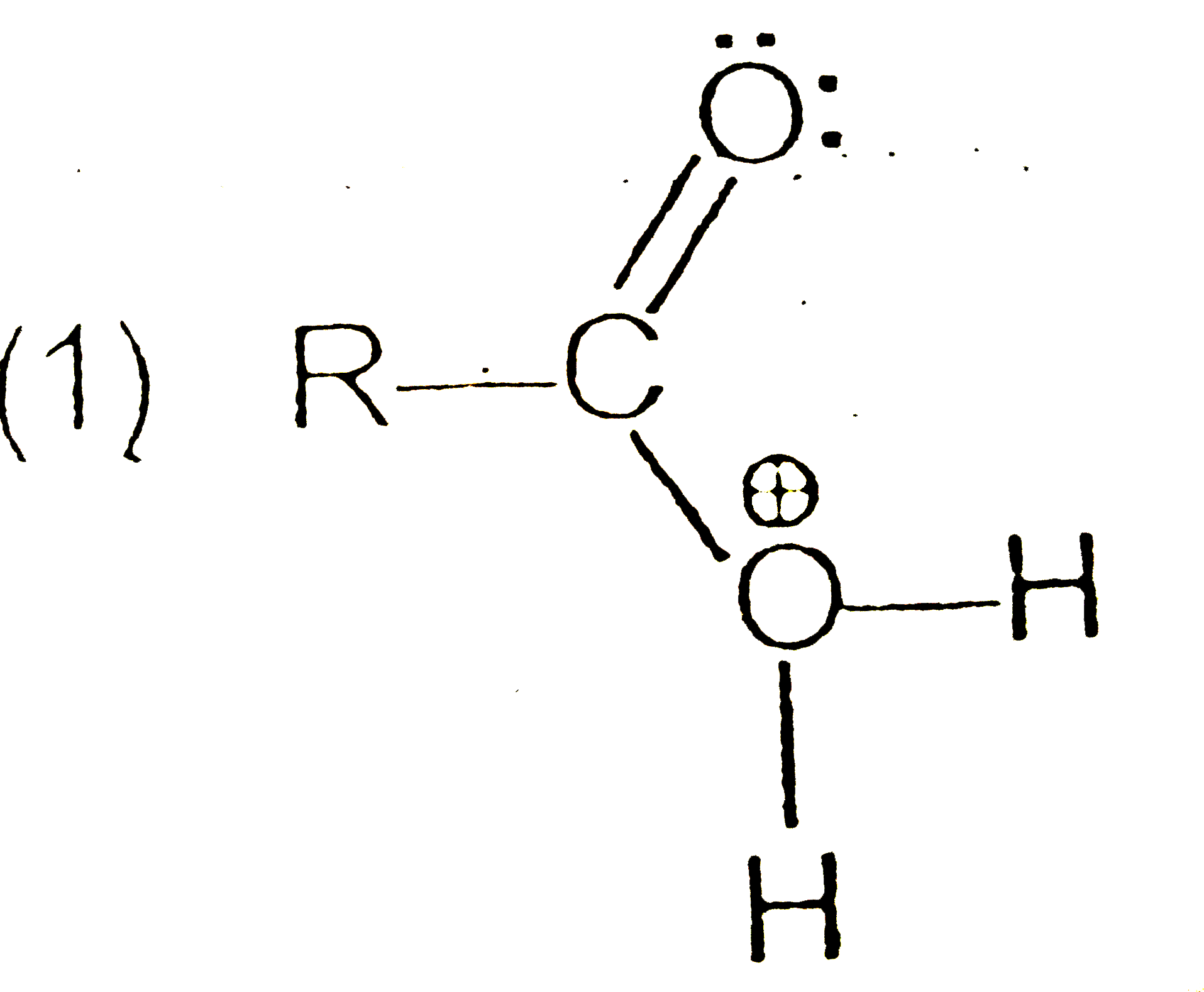Which of the following observations is correct and is used in the identification of carboxylic acids
Carboxylic acids liberates CO2 gas from NaHCO3 solution
They produce fruity smell of esters when heated with alcohol in presence of conc. H2SO4.
Both (a) and (b)
Iodoform test
The correct Answer is:C
To solve the question regarding the identification of carboxylic acids, we need to analyze the provided observations step by step.
1. Understanding Carboxylic Acids:
- Carboxylic acids are organic compounds containing a carboxyl group (-COOH). They are known for their acidic properties and can react with bicarbonates.
2. Observation 1: Carboxylic acid liberates CO2 gas from any HCO3 solution.
- When a carboxylic acid reacts with sodium bicarbonate (NaHCO3), it produces carbon dioxide (CO2) gas.
- The reaction can be represented as:
RCOOH+NaHCO3→RCOONa+H2O+CO2↑
- This reaction confirms the presence of a carboxylic acid because the evolution of CO2 gas is a characteristic reaction of acids with bicarbonates.
3. Observation 2: The fruity smell of esters when heated with alcohol in the presence of concentrated H2SO4.
- Carboxylic acids can react with alcohols in a process called esterification, especially in the presence of a strong acid catalyst like concentrated sulfuric acid (H2SO4).
- The reaction can be represented as:
RCOOH+R′OHH2SO4−−−−→RCOOR′+H2O
- This reaction produces an ester, which often has a fruity smell. This observation is also true and is used to identify carboxylic acids.
4. Conclusion:
- Both observations (1 and 2) are correct and can be used in the identification of carboxylic acids.
- Therefore, the correct answer is that both statements are valid.
Final Answer:
Both observations A and B are correct.
---
- Carboxylic acids are organic compounds containing a carboxyl group (-COOH). They are known for their acidic properties and can react with bicarbonates.
- When a carboxylic acid reacts with sodium bicarbonate (NaHCO3), it produces carbon dioxide (CO2) gas.
- The reaction can be represented as:
RCOOH+NaHCO3→RCOONa+H2O+CO2↑
- This reaction confirms the presence of a carboxylic acid because the evolution of CO2 gas is a characteristic reaction of acids with bicarbonates.
- Carboxylic acids can react with alcohols in a process called esterification, especially in the presence of a strong acid catalyst like concentrated sulfuric acid (H2SO4).
- The reaction can be represented as:
RCOOH+R′OHH2SO4−−−−→RCOOR′+H2O
- This reaction produces an ester, which often has a fruity smell. This observation is also true and is used to identify carboxylic acids.
- Both observations (1 and 2) are correct and can be used in the identification of carboxylic acids.
- Therefore, the correct answer is that both statements are valid.
Both observations A and B are correct.
Topper's Solved these Questions
- Practical Organic ChemistryBOOK - ERRORLESS CHAPTER - Practical Organic ChemistryEXERCISE - JEE Ssection (More than one choice correct answer)
16 Videos
- Practical Organic ChemistryBOOK - ERRORLESS CHAPTER - Practical Organic ChemistryEXERCISE - Critical Thinking (Objective Questions)
13 Videos
- ORES, MINERALS AND METALLURGICAL EXTRACTIONBOOK - ERRORLESS CHAPTER - ORES, MINERALS AND METALLURGICAL EXTRACTIONEXERCISE - JEE ANSWER TPYE QUESTION (JEE Advanced) 2018) Numeric answer type question
1 Videos
- S AND P BLOCK ELEMENTSBOOK - ERRORLESS CHAPTER - S AND P BLOCK ELEMENTSEXERCISE - JEE Section (JEE advanced ) 2018(Numeric answer type question)
1 Videos
Similar Questions
Knowledge Check
Which of the following intermediates are involved in the acid catalyzed esterification of carboxylic acid?
A B
B C
C D
D
Which of the following reagents cannot be used for the reduction of carboxylic acid to alcohol ?
ANaBH4BH2 and Pt catalystCLiAlH4DNaBH3CNWhich of the following reactions can give carboxylic acid?
AC6H5OH+NaOH+CO2→BC6H5OH+NaOH+CO2→CC6H5OH+CCl4+NaOH→DC6H5OH+CHCl3+NaOH→
The suffix used in carboxylic acid is
View SolutionWhich of the following is not derivative of carboxylic acids ?
View SolutionWhich of the following reactions involves the formation of a methyl ester from a carboxylic acid ?
View SolutionWhich of the following carboxylic acids is most reactive towards esterification?
View SolutionWhich of the following carboxylic acids is most reactive towerds esterification ?
View Solution
